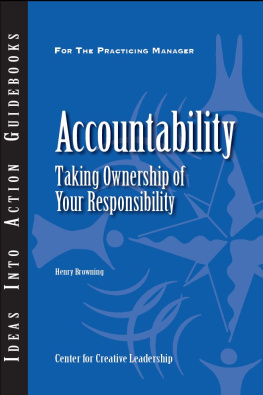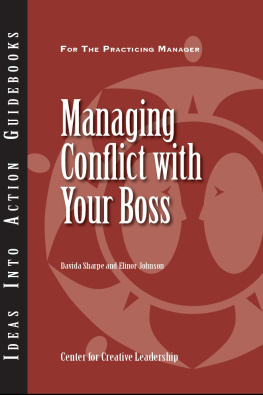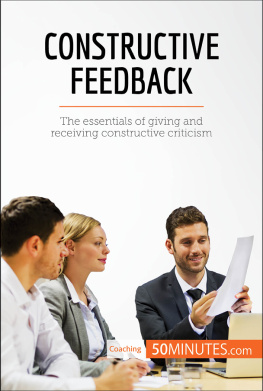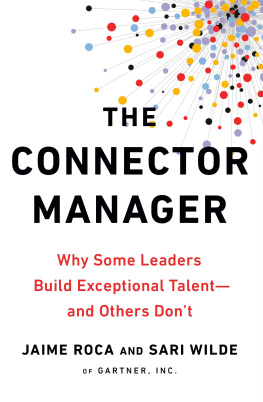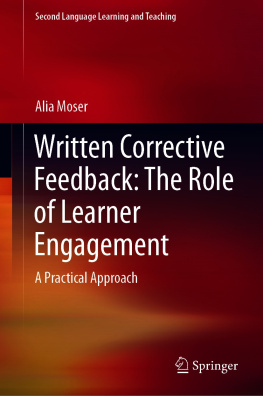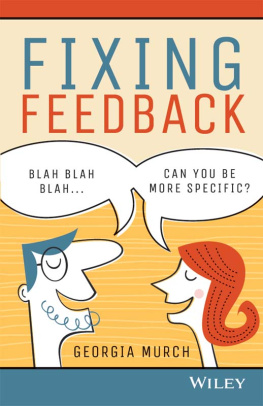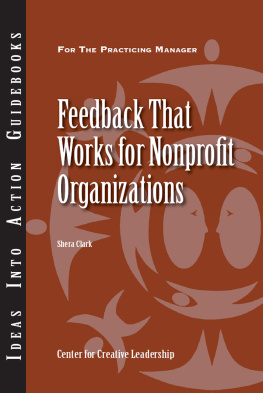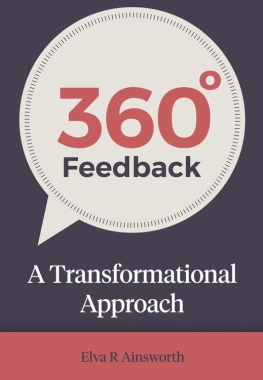Ideas Into Action Guidebook
Aimed at managers and executives who are concerned with their own and others' development, each guidebook in this series gives specific advice on how to complete a developmental task or solve a leadership problem.
| LEAD CONTRIBUTOR | Sloan R. Weitzel |
| GUIDEBOOK ADVISORY GROUP | Victoria A. Guthrie |
| Cynthia D. McCauley |
| Russ S. Moxley |
| DIRECTOR OF PUBLICATIONS | Martin Wilcox |
| EDITOR | Peter Scisco |
| WRITER | Peggy Droz |
| DESIGN AND LAYOUT | Joanne Ferguson |
| CONTRIBUTING ARTISTS | Laura J. Gibson |
| Chris Wilson, 29 & Company |
Copyright 2000 Center for Creative Leadership.
All Rights Reserved. No part of this publication may be reproduced, stored in a retrieval system, or transmitted, in any form or by any means, electronic, mechanical, photocopying, recording, or otherwise, without the prior written permission of the publisher.
CCL No. 405
ISBN-13: 978-1-882197-58-3
ISBN-10: 1-882197-58-5
Center for Creative Leadership
Post Office Box 26300
Greensboro, North Carolina 27438-6300
336-288-7210
www.ccl.org/publications

The Ideas Into Action Guidebook
This series of guidebooks draws on the practical knowledge that the Center for Creative Leadership (CCL) has generated, since its inception in 1970, through its research and educational activity conducted in partnership with hundreds of thousands of managers and executives. Much of this knowledge is sharedin a way that is distinct from the typical university department, professional association, or consultancy. CCL is not simply a collection of individual experts, although the individual credentials of its staff are impressive; rather it is a community, with its members holding certain principles in common and working together to understand and generate practical responses to today's leadership and organizational challenges.
The purpose of the series is to provide managers with specific advice on how to complete a developmental task or solve a leadership challenge. In doing that, the series carries out CCL's mission to advance the understanding, practice, and development of leadership for the benefit of society worldwide. We think you will find the Ideas IntoAction Guidebooks an important addition to your leadership toolkit.
Executive Brief
Whatever level you occupy in an organization, from line manager to senior executive to team leader, the skill of giving meaningful and effective feedback is an important component to helping other people develop and to getting the job done. Creating and delivering a specific message based on observed performance is key to effective feedback. Your feedback should enable the receiver to walk away understanding exactly what he or she did and what impact it had on you. When the result is this specific and this direct, there is a better chance that the person getting the feedback will be motivated to begin, continue, or stop behaviors that affect performance. This guidebook explains how to deliver effective feedback by showing how to build your message, when to deliver it, and how to communicate it. By using the methods and examples in this guidebook, your feedback becomes a tool for development for others and for yourself.
What Is Effective Feedback?
As a manager, you probably spend a good deal of time reviewing and measuring all kinds of information to understand the factors that affect your business. What is my division's revenue versus expenses for the quarter and what is driving expenses up? What percentage of our quota has my division achieved year to date and what is left in the pipeline? What is our current production level and how can we increase capacity in the short term? Determining specific quantifiable numbers and developing clear action plans to reach those numbers are integral components of a manager's job. Yet oftentimes the same managers who develop specific what if scenarios and examine business data with the intense rigor of a scientist use no such specifics or data when evaluating the company's most important capital: employee performance. Effective feedback requires that you use the same attention to detail that you employ when analyzing business information.
Creating and delivering a specific message based on observed performance is key to effective feedback. You may have told a fellow manager, a co-worker, or even your boss that he is a good leader, or that she communicates well, or that he needs to be more strategic. You may believe that such statements are helpful examples of feedback. But these statements only evaluate or interpret, they don't describe specific behavior so that a person can learn and develop by repeating or avoiding that behavior.
Effective feedback should enable the receiver to walk away understanding exactly what he or she did and what impact it had on you. When the result is this specific and this direct, there is a better chance that the person getting the feedback will be motivated to begin, continue, or stop behaviors that affect performance.
Think about statements you might have made to co-workers, bosses, or subordinates that concerned their performance. Then ask yourself: What did the person do that made you think he was a good leader? What did she say and how did she say it to make you think she communicates well? What did he do that made you conclude his thinking wasn't strategic enough?
In the pages that follow you'll learn how to answer questions like those as you develop your feedback skills. After you've read this guidebook, you will be able to:
- Give effective feedback to a boss, peer, or subordinate that accurately represents your thoughts without blame or judgment.
- Become more conscious of a person's actual behavior and the messages it sends.
- Increase your awareness of the emotional responses you have to the actions of others.
- Increase the likelihood that you will receive more effective feedback that you can use for your own development.
Ten Common Mistakes in Giving Feedback
During many CCL programs, we ask managers and executives: How many of you give good, consistent feedback to the people you work with? Usually only one or two people raise their hands. Why so few? The reasons are varied: It's hard to do; I am afraid I will say something I will regret; people get emotional when they hear things they don't like; it might jeopardize my work relationships. All of these concerns are valid, but they all stem from common mistakes that people make when giving feedback:
1. The feedback judges individuals, not actions. Probably the number one mistake people make in giving feedback is putting it in judgmental terms. If you say to someone You were too abrasive, or You need to be a better team player, you send a strong message about what you think is right or wrong and that you've judged this person as falling short of expectations. Judgmental feedback puts people on the defensive. By the time the words are out of your mouth, your feedback recipient is already thinking Who do you think you are calling me abrasive? The energy spent defending themselves from your attack defeats any chance of a useful conversation.
2. The feedback is too vague. The second most common mistake made in giving feedback is the use of generalized, clich catch phrases like You are a good leader, You did a great job on the presentation, or You have a lot of common sense. The person hearing these words may be happy to get the compliment, but they won't have any idea of what exactly they did to earn your praise. If you want to encourage someone to repeat productive behavior, you have to let them know what they did so they can keep doing it.



